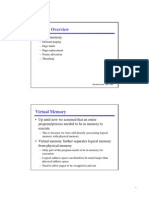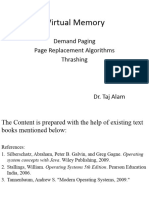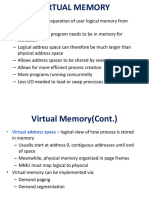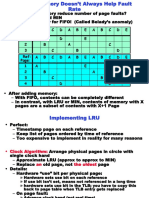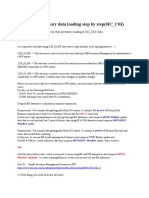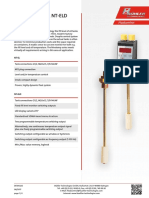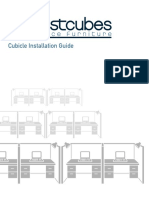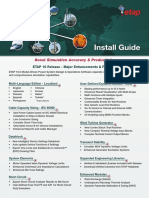0% found this document useful (0 votes)
11 views11 pagesSummary of Virtual Memory
The document discusses memory management and virtual memory, highlighting the benefits of demand paging, which loads only necessary pages into memory to optimize CPU utilization and reduce I/O operations. It covers various page replacement algorithms, including FIFO, OPT, and LRU, and introduces concepts like copy-on-write and page-fault frequency to manage memory efficiently. Additionally, it addresses kernel memory allocation strategies, memory-mapped files, and the impact of page size and TLB reach on performance.
Uploaded by
ianniyann721Copyright
© © All Rights Reserved
We take content rights seriously. If you suspect this is your content, claim it here.
Available Formats
Download as DOCX, PDF, TXT or read online on Scribd
0% found this document useful (0 votes)
11 views11 pagesSummary of Virtual Memory
The document discusses memory management and virtual memory, highlighting the benefits of demand paging, which loads only necessary pages into memory to optimize CPU utilization and reduce I/O operations. It covers various page replacement algorithms, including FIFO, OPT, and LRU, and introduces concepts like copy-on-write and page-fault frequency to manage memory efficiently. Additionally, it addresses kernel memory allocation strategies, memory-mapped files, and the impact of page size and TLB reach on performance.
Uploaded by
ianniyann721Copyright
© © All Rights Reserved
We take content rights seriously. If you suspect this is your content, claim it here.
Available Formats
Download as DOCX, PDF, TXT or read online on Scribd
/ 11









